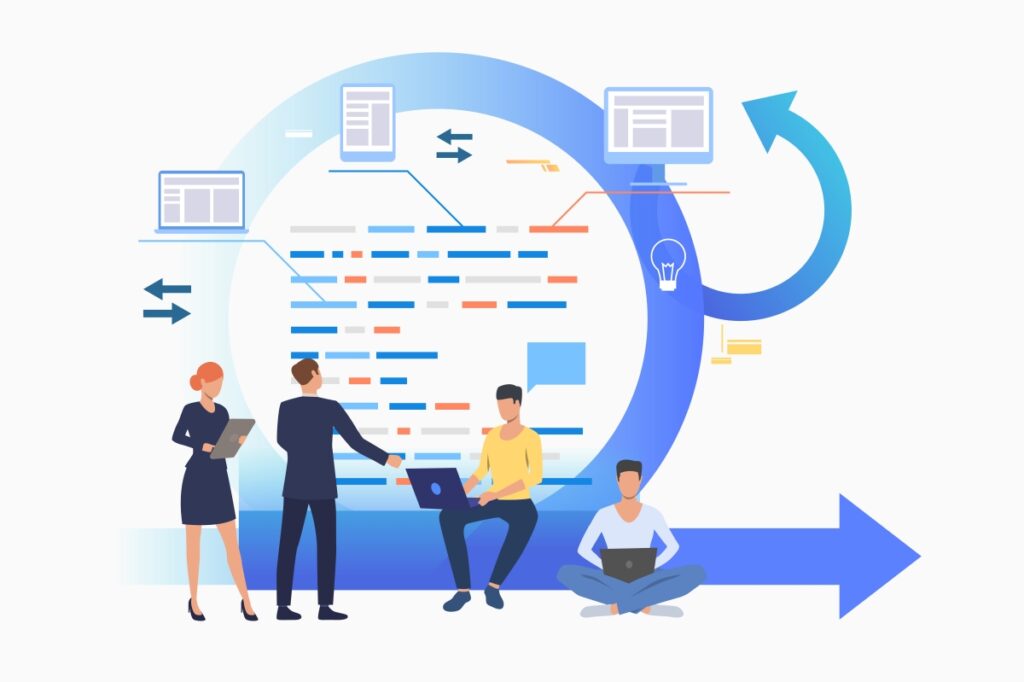Table of Contents
ToggleA. Apply cadence
B. Decentralize decision-making
C. Apply systems thinking
D. Deliver value incrementally
The correct answer is
D. Deliver value incrementally
Explanation
SAFe’s first Lean-Agile Principle includes “Deliver early and often” and also emphasizes “Deliver value incrementally.” This principle highlights the importance of breaking down large work items into smaller, more manageable pieces that can be completed in a shorter timeframe. By delivering value incrementally, organizations can provide continuous value to their customers, receive feedback more quickly, and adjust their approach based on that feedback to better meet customer needs and expectations. This approach is foundational to Agile and Lean methodologies, promoting faster time-to-market and improved product quality through iterative development and delivery processes.
The first Lean-Agile Principle of SAFe, emphasizing “Deliver early and often” and “Deliver value incrementally,” is foundational for achieving agility and responsiveness in today’s fast-paced market environments. This principle is rooted in the broader Agile and Lean methodologies, which prioritize delivering customer value and adapting to change rapidly. Let’s dive into the deeper aspects of this principle:
Incremental Value Delivery
The concept of delivering value incrementally involves breaking down large projects or features into smaller, manageable pieces that can be completed and delivered in a shorter timeframe. This approach has several key benefits:
- Flexibility and Responsiveness: By delivering in increments, organizations can more easily adapt to changes in customer needs or market conditions. This flexibility allows them to pivot their strategy or product features based on real-world feedback and emerging trends.
- Risk Mitigation: Incremental delivery helps mitigate risks associated with large-scale projects. Since value is delivered in smaller pieces, any issues or mistakes can be identified and addressed early in the process, reducing the potential impact on the overall project.
- Improved Customer Satisfaction: Delivering value incrementally allows customers to start benefiting from the product or features sooner. This early and continuous delivery of value can improve customer satisfaction and loyalty, as customers see continuous improvement and responsiveness to their needs.
Deliver Early and Often
The emphasis on delivering early often encourages teams to focus on speed and frequency of delivery, without sacrificing quality. This approach is supported by several practices within SAFe and Agile methodologies:
- Continuous Integration and Continuous Delivery (CI/CD): These practices automate the software release process, from development to deployment. By continuously integrating and delivering small changes, teams can ensure that software is always in a releasable state, facilitating frequent releases to customers.
- Feedback Loops: Early and frequent delivery enables regular feedback from stakeholders and customers. This feedback is invaluable for guiding future development efforts, ensuring that the product evolves in a direction that meets users’ needs and expectations.
- Prioritization of Work: To deliver early and often, teams must prioritize work that delivers the most customer value. Techniques like the Weighted Shortest Job First (WSJF) are used within SAFe to help prioritize features and work items based on their value, risk, and effort.
Implementation in SAFe
Within the Scaled Agile Framework, this principle is operationalized through various mechanisms:
- Program Increments (PIs): SAFe organizes work into Program Increments, typically 8-12 weeks long, during which Agile Release Trains (ARTs) deliver incremental value in the form of working, tested software and systems.
- Iteration Planning: Each PI consists of multiple iterations (or sprints) where teams plan, develop, and deliver value in smaller increments.
- Inspect and Adapt (I&A): At the end of each PI, teams participate in an Inspect and Adapt event to review the increment, gather feedback, and identify areas for improvement.
By delivering value incrementally and focusing on early and frequent delivery, organizations can achieve higher levels of agility, customer satisfaction, and competitive advantage. This principle guides teams to focus on what is most important: delivering tangible value to their customers most efficiently and responsively possible.
Other Leading SAFe 6.0 Question – The primary need for SAFe is to scale the idea of what?
